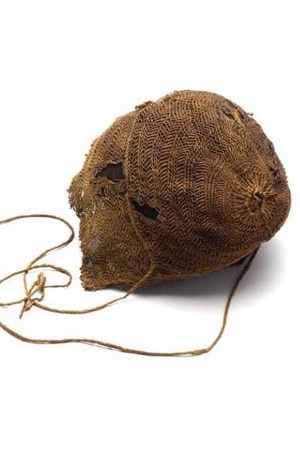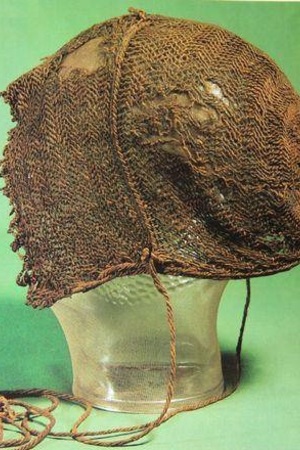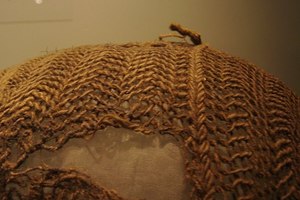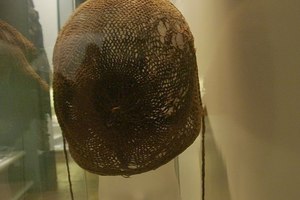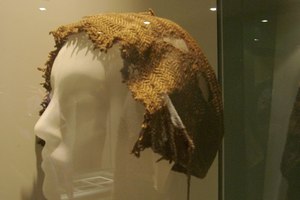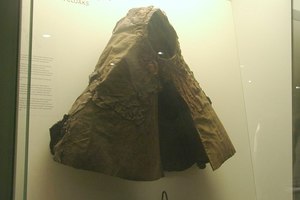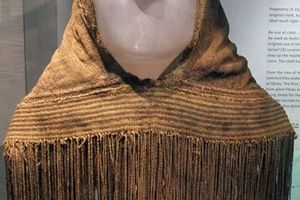Celtic headwear
Women's Bonnet
A Celtic women's headwear has survived to this day. A woman, aged 25-30, found in a burial site in Bredmose, Himmerland, had a very intricate hairstyle covered by a bonnet woven using the sprang technique. This archaic technique of half-weaving, predating knitting, allows for the creation of a fabric with great elasticity.
Hood
It is known that the Celts wore elongated hoods that covered the head and shoulders. The Celtic name for this headwear has not been preserved, so it is commonly referred to by the Latin word "cucullus." Such hooded cloaks have been found in Danish bogs (Krogens Mølle, Vendsyssel, Oster Torslev) and in the Orkney Islands (Orkney hood). The Torrsberg hood, made of leather, dates back to approximately the 4th century CE. The Orkney hood predates the Torrsberg hood and is dated between 250 and 615 CE. It is sewn from woolen fabric and adorned with a braided edge and a long fringe.
Reliefs and figurines depicting people wearing cucullus hoods have survived to this day. These hoods could reach significant lengths and resemble cloaks rather than typical hoods.
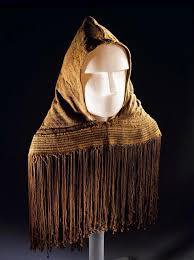 An Iron Age hood found on the Orkney Islands. National Museum of Scotland
An Iron Age hood found on the Orkney Islands. National Museum of Scotland
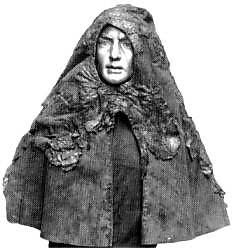 Fur cape from Krogens Mølle, sketch by Margaret Hald
Fur cape from Krogens Mølle, sketch by Margaret Hald
Related topics
Celts, Pileusr, Headwear, Celtic cloaks
